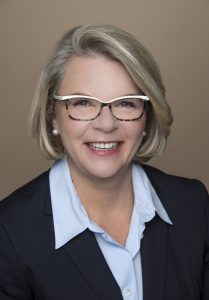Involving board members in planned giving is an ongoing challenge for many nonprofit organizations. This entails struggling to make the board understand the importance of gift planning to the charity’s financial future, as well as involving the board in the process of cultivating and soliciting gifts themselves.
Philip M. Purcell, vice president for planned giving and endowment stewardship at the Ball State University Foundation in Muncie, Ind., believes that a key to capturing their attention and involvement is “to state a case for planned giving” almost like a planned giving officer would to a donor.
“Think of encouraging planned giving as part of (the board’s) duty,” Purcell said at the recent National Conference on Planned Giving in Grapevine, Texas.
“As with creating the case for any fundraising program, the case for planned giving must be effectively made — and accepted — by the board of directors,” he stated in a paper submitted with his presentation. “Hopefully, acceptance of this case will lay the groundwork for support for the planned giving program by the board such as in the budget, with fundraising assistance by board members.”
To lay the groundwork for support of a planned giving program, Purcell said the governing board, and ultimately donors, must “connect the dots” between the documented needs of the local community or broader scope; the service to those needs provided by the mission and programs of the charitable organization; and, the donors’ planned gifts required to fund the mission, services and programs.
As another step in the process, Purcell suggested linking planned giving with board duties, responsibilities and even the organization’s history of planned giving. “Assuring prudent management of a charitable organization is a logical extension of a board’s legal duty of care,” he stated. Maximizing fundraising revenue through all reasonable and appropriate means, including planned giving, might be regarded as one fulfillment the board owes the organization, he said.
“As boards of directors evaluate their duty of care relative to assuring adequate revenues, an exclusive focus on fundraising strategies based on annual giving, current major outright gifts, grant-writing and special events to the exclusion of planned giving may be regarded as imprudent,” he said.
“Integrating planned giving in the structure, staffing, budget and other aspects of a total development program is a means to maximize donors’ philanthropy on behalf of the organization.”
This also means “a charity board must exercise its duty of care to assure that all development programs are sufficiently funded, including the planned giving program,” he said.
Another manner in which the board can exercise its duty of care “is to review and approve policies and procedures. A gift-planning policies and procedures manual must be a dynamic document, allowing for change over time,” he said.
Purcell outlined several practical steps an organization can take to get board members involved in the hands-on of gift planning. “It is often suggested, or even required, that board members make an annual outright gift to the organization,” he said. “Why not consider 100 percent of the board with planned gifts, too?”
He explained that the dollar amount and type of gift can remain confidential, “but such participation would offer a helpful and strategic marketing opportunity for the planned giving staff to promoteÉ It’s a way to show their leadership,” he told the conference attendees. Other ways board members can use planned gifts include:
- Encouraging others to give by making challenges or offering matching planned gifts;
- Using unrestricted or endowment planned gifts to illustrate the important types of planned gift opportunities; and,
- Making planned gifts for specific programs or where the need is greatest in the long term.
Another area where board members can be helpful is in the area of donor identification and qualification. In confidential settings, such as board committee meetings, campaign committee meetings or even personal calls to staff, “board members can assist the staff with the identification and qualification of potential planned gift donors,” he explained.
“Board members can also be extremely effective in donor cultivation,” he said.
He suggested involving them in opening the doors by introducing staff members to prospects or hosting events that introduce prospective donors to the organization and staff members.
Another way to be involved is for board members who are planned giving donors themselves to offer testimonials for use in marketing activities, such as newsletters, brochures, Web sites, target letters, public presentations and advertisements.
Board members also can be effective in donor education, negotiation and solicitation. “In certain cases, board members may present a planned gift proposal or a ‘blended’ (planned and outright gift) proposal to carefully-selected donors,” Purcell said.
He cautioned, however, “If they are going to be involved in solicitation, it must be carefully managed.” Coordination with staff is essential, he said. He emphasized significant preparation and education of board members, even using scripts and role-playing to rehearse a solicitation to “assure that appropriate answers and follow-up is provided with staff support.”
Once a planned gift is completed, he said, “Board members can play a very helpful role in assisting with the personal recognition of donors in many ways.”
The recognition might include personal calls, visits, letter or notes with words of appreciation in appropriate cases; presentation of planned gift recognition plaques or other gifts in private or public venues such as an annual planned gift donor appreciation event, and attendance and participation at campaign or major donor events where donors are recognized.
Finally, Purcell suggested that board members can be the “eyes and ears” of an organization by assisting with evaluation of donor stewardship and making suggestions for improvement, “especially if they are donors themselves and/or communicate with donors. They can provide good ideas — and approve a budget that provides for spectacular stewardship.” NPT
***
Mike Patterson is a former editor at several large daily newspapers and now is associate vice president of planned giving with the Arthritis Foundation and is based in San Antonio, Texas.












